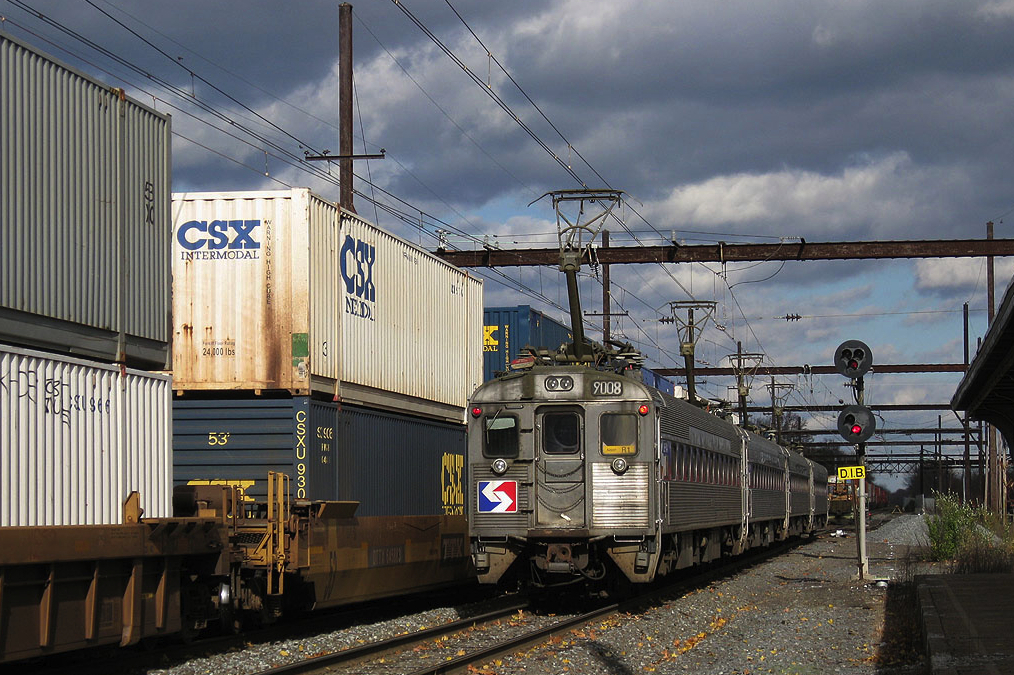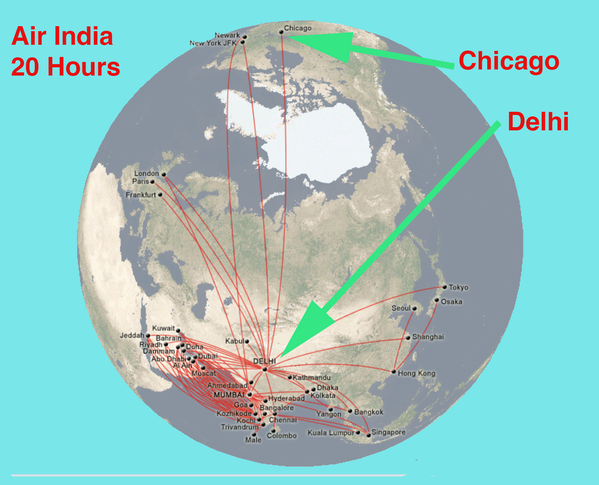If you remember you high school physics, energy cannot be created or destroyed. If you convert the various propulsion systems energy used to watts or BTU's, for a given load over a given distance, the energy cost will be the same. Gas, propane, battery, diesel fuel, coal or natural gas burned in a power plant to run the grid and change electric car batteries or run an electric railroad, the net energy savings is zero. The waste occurs in all those cars and trucks stuck in traffic, idling or going slow, below their optimum fuel use range. The energy expended to move a double stack of 75 cars, 150 full loaded 40 ton trailers over a given distance will be the same as 150 tractor/single trailers doing the job over the same distance, or tractor/double trailers over the same distance, within an acceptable range of difference that makes true energy savings a hard thing to calculate honestly without global warming hype and politics. That is energy, not fuel consumption to make that energy, and there too, a diesel engine making 500HP or an electric motor burning 500HP of energy that came from burning fuel to make that 500HP worth of electricity, net savings, zero(nuke plants, daytime good weather solar, or windmills when the wind is blowing notwithstanding)Plus that minimal savings is totally out the window when those stacks are offloaded and put on a trailer and hauled by a truck to where ever it is going. You might say, well, everybody should have their own sidings, but the energy expended in single car movements would also be a factor in overall savings. It is a very tangled web of the Laws of Conservation of Energy attempting to be broken to prove a point, but that is why it is called a Law and not a suggestion, it can't be broken.
The law of conservation of energy doesn't handle one other thing, though, and that is thermodynamic efficiency. In a heat engine (which pretty much all our power sources are), the efficiency is basically T2-T1/T2, where T1 is the starting temperature of a heat cycle engine and t2 is the peak. To gain 100% t1 would need to be absolute 0. Far as I know on this scale the most efficient heat engine we have is a solar cell, it is about 35% last I checked (may be higher).
When you use an energy source, you are right energy is not destroyed. But for example, when you run a gasoline engine (efficiency I think using the formula about is like 6 or 7%, if memory serves me right), that represents usable energy. In a car the other 93% or so is lost as heat, a steam engine is even less efficient (diesel is about the same as a gas engine).
With an electric power plant, there are losses from fuel to output, when you heat up water to drive a turbine, using the formula above it heating the water is around 7,8% (and if someone knows the real value, and I am wrong, let me know). Using the water to drive a turbine reduces the usable energy about 10% (the number 90% comes to mind in spinning a turbine to power output). Transmission causes further loss of usable energy, and when you use electricity to spin an electric motor, there is about a 5% loss (95% efficiency).
There also is efficiency of transport. A train for each gallon of diesel fuel used, carries a larger load of freight a longer distance than a truck can do for example (fuel used per ton/mile).
What these discussions boil down to is usable energy, which is what the thermodynamic efficiency number is about. And yes, if you factor converting let's say natural gas to boil water to run a turbine, generate power, and use that power to drive an electric engine, you might find out that due to the losses in doing what I just said, a diesel engine might be more efficient (diesel engine has losses off the 8% or so thermo efficiency, there are losses in generating power through a generator/alternator and then driving the motor, but it is relatively small, compared to the huge loss burning natural gas itself to heat the water up.
On the other hand, there is the other factor, one being pollution. If we are talking transport, lot easier to clean the emissions of a power plant than a lot of vehicles individually. More importantly, if we are talking carbon emissions, a power plant, whether carbon capture actually can work (not so far), or if it is being generated by nuclear power or wind or solar or hydro, would have 0 net carbon gain compared to the vehicles (I saw a study on carbon emissions for a car/mile versus an electric car being charged from the grid, even using coal to generate the power the electric car's total carbon footprint is way less than a gas or diesel powered car engine/carbon per mile).
Personally I doubt that electrifying the railroads would be practical nor desirable in what we are talking about, I suspect if we are going to tackle carbon seriously (a big if), that likely for heavy transport like trains and aircraft, the biological route may be the answer there, trucks may end up with rapid charge electric power (if current trends continue, they may have the range and charging speed, assuming we can build a real heavy duty network able to feed 800kw charging station, to allow for electric trucks to work in maybe 5-10 years I would guess). There is no one solution, eventually though what will happen is that fossil fuel usage will be countered by more green energy that offsets what fossil fuel use is putting out.
Obviously, at this point none of us has the power to decide anything, but there have been some really good points made on here, and what we would like and what is practical is often not easy. To guys running three rail trains off of electricity, electric railroads can seem like a pretty obvious thing *lol*







